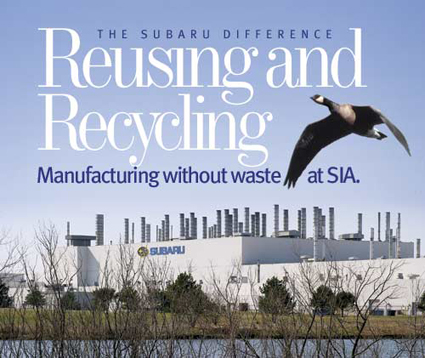The inability of our society to take serious action on problems such as climate change is extremely frustrating to many people. After all we know what it is we have to do; why don’t we just get on and do it? It seems simple, but there are many obstacles to change. Most of these are well known, such as our continuing reliance on fossil fuels, and our dependence on an economy whose primary purpose appears to be the generation of ever-increasing corporate profits. But I believe that there is one factor which most people do not even consider as an obstacle to sustainability, and which is just as powerful in its ability to inhibit change. I am referring to the influence of inertia at all levels of society.
In physics, inertia refers to the property of a body to remain in a constant state of rest or motion. However in broader terms, it is often used to describe a system which is resistant to change. We see this at all levels within society. Cultural inertia refers to the bond of shared customs and traditions which provide a unifying force for members of religious and cultural groups. This is the reason that many ethnic groups manage to maintain a distinct identity, even when they are transplanted from their home country. Cultural traditions are often extremely resistant to change, which can result in problems when traditional beliefs and customs clash with the value system of the host country.
On a larger scale, inertia also operates at the national level. In democracies, systems of government and laws generally reflect the values of the populace, which in turn are often shaped by historical events and traditions. When governments of different political stripes are elected, the inertia in the system helps to ensure that changes occur slowly, and have to work their way through a professional bureaucracy before becoming adopted.
Inertia within national governments can often be a good thing, in that it can provide a sense of stability. However sometimes it is simply a consequence of a dysfunctional government. This has recently been demonstrated in the US, where intense partisanship has effectively paralysed many of the mechanisms of government. The system that was put in place by the Founding Fathers was designed to ensure that power would not be concentrated in one place. However in recent years the House of Representatives has been controlled by the Republicans, and the Senate has been controlled by the Democrats. This has lead to a stalemate, with the result that little of substance has been able to work its way through the legislative process. This is compounded by the bizarre (to non US eyes anyway) practice of many voters, who will often vote for different parties to represent them in the Senate and the House of Representatives, thus helping to ensure the continued paralysis of the legislative process.
In more general terms we can see the effects of inertia in many aspects of our daily lives. For example, many people have asked why North Americans can’t drive smaller, more fuel-efficient vehicles like the rest of the world does. Well firstly, North American car plants are not geared up to produce such vehicles. The presence of existing infrastructure exerts a powerful influence when it comes to maintaining the status quo. A number of plants have been retooled in recent years, but much of the North American car industry is still focused on producing heavy, gas-guzzling vehicles of a kind not seen anywhere else in the world. Economic inertia ensures that any change to this pattern will happen only slowly
This example also provides an illustration of social inertia. People do not like to be seen as being different. This characteristic of our behaviour helps to explain why early adoption of new habits and new technologies generally occurs slowly. Most people will only accept new ideas when a certain critical threshold of the population has already done so. Therefore when the average person goes to buy a car, they will tend to buy the same kind of vehicle that they see around them, regardless of the fact that driving a smaller vehicle would save them money. For example, here in British Columbia it is not uncommon to see otherwise environmentally conscious people driving around in large SUVs. Why? Because everyone else does it! The power of social inertia to impede real change should never be underestimated.
Overcoming Inertia
It is well known that the uptake of new ideas and new technologies tends to be exponential in nature. Typically with new technologies there tend to be few early adopters. In the case of fuel-efficient vehicles in North America, there has been a slow increase in numbers over time, as increasingly-large numbers of people see the considerable benefits of paying less at the pump. Sooner or later we will reach a point when the rate of uptake skyrockets, seemingly overnight. At this stage we will start noticing fuel-efficient vehicles everywhere. However the perception of overnight change is simply a consequence of the exponential function; the driving forces behind the change have actually taken years to reach critical mass. This example illustrates another key point about inertia; once sufficient pressure has built up in the system then the response becomes almost unstoppable.
Another way of overcoming inertia is when a system receives a sudden shock. The classic example of this is Pearl Harbor. When the Japanese launched a surprise air raid on the headquarters of the US Pacific Fleet, the inertia which had been keeping the US out of World War Two was overcome almost overnight. Not only did this incident drag the US into the war, but it lead to the adoption of a whole new paradigm, which just a few short months before would have been unthinkable. The change permeated through the whole US economy; automobile assembly lines were converted to produce munitions, the production of most luxury goods was halted, and rationing was introduced for meat, for basic foodstuffs, and for gasoline.
It may be that we need a shock similar to Pearl Harbor to enable us to overcome the current impediments to change within our society. Experience suggests that in the wake of catastrophic events, people tend to be more receptive to new paradigms and new ways of doing things. In order to shock us out of our complacency, such an event would need to be on an unprecedented scale, since even the recent spate of heavy flooding events and droughts across the world seem to have had little effect on our determination to carry on with business as usual.
But inertia does not only apply in the human realm: it also plays a significant role in many physical earth systems. The role of the ocean as a heat sink, and the response of the polar ice caps to increased atmospheric and ocean temperatures are just two examples of earth processes which show considerable inertia. As with the human examples discussed above, it is likely that the current, relatively small changes we have seen so far are only a prelude to much larger and more dramatic changes. These could be the tipping points that are often talked about in the context of climate change. We are already seeing ominous warnings of things to come, in the form of increasingly unpredictable weather events, rapidly-declining sea ice extents in the arctic, and the speeding up of Greenland’s massive outlet glaciers.
We have very likely put ourselves on a collision course with nature. Societal inertia, driven by cultural, social and economic factors, is a powerful force. Many people simply cannot conceive of economies and societies being organised in any other way than they currently are. And yet, formidable as the momentum that our human-created world has, it pales into insignificance compared with the forces of nature. Through our actions, we may be waking the sleeping giant, leading to consequences on a scale we are not able to imagine. If it comes down to a contest between the human world and the physical world I know where I would place my money.




